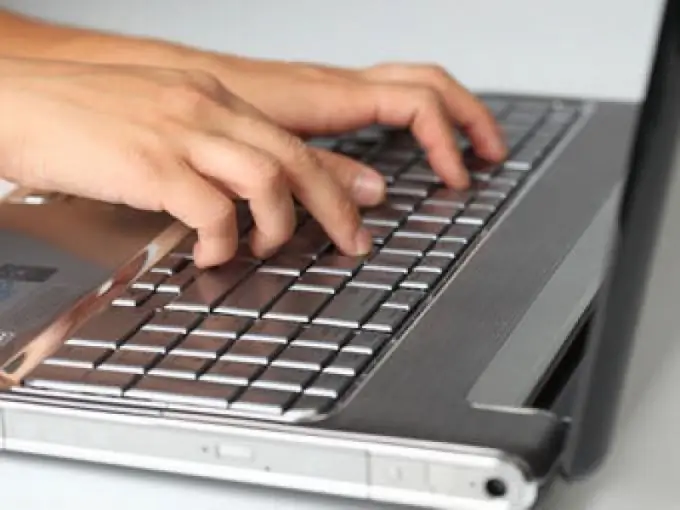A computer mouse is a convenient and familiar tool. However, experienced users say that working with hotkeys is much faster, because you do not have to waste time navigating through the menu and opening the necessary options. In graphic editors, the keyboard will provide much more precise cursor positioning. In addition, the mouse can suddenly fail and then the skills of working with the keyboard will become simply necessary.

Logging in and getting started
Most often, the user begins to master keyboard shortcuts when there is no way to connect a mouse. When you turn on the computer, a "Welcome window" and a list of users appear on the monitor. Use the Ctrl + arrow keys to select your profile. When you reach the selected user, press Enter.
The main menu can be opened in two ways: press the Win key - the Windows logo is drawn on it, or press the Ctrl + Esc combination. You can navigate it using the arrows. To open the desired menu item - press Enter. To exit the menu, use the Esc key.
Basic keyboard shortcuts
To switch between windows in Windows 7, use the Win + Tab key combination (or Win + Shift + Tab to switch in the opposite order). On older versions of the operating system, try pressing Alt + Tab (Alt + Shift + Tab). The combination alt="Image" + Esc has the same effect.
To minimize all open windows, use the Win + M combination, and to restore them, press Shift + Win + M. For the same purposes, you can use the Win + D keyboard shortcut.
• Win + E - open the "Computer" component.
• Ctrl + alt="Image" + Delete or Ctrl + Esc + Shift - call the task manager.
• Win + F1 - open help.
• Win + F - search for files or folders.
• Ctrl + Win + Tab - switch between programs on the taskbar using the arrow keys.
• Win + Break - opens the "System" window.
• Alt + Tab - will bring up a window with icons of all running programs.
To go to the explorer or program menu, use the F10 or Alt key. You can move through the menu using the arrows. Drop-down lists will open by pressing alt="Image" + "Down" or "Up" arrows. To move through the tabs - arrows "Left" or "Right". In Windows 7, it is convenient to navigate the menu by pressing Alt once and selecting the letters you need. For example, alt="Image" + F will bring up the File menu.
How to work with files without a mouse
To work with files, it is enough to remember a few simple keyboard shortcuts:
• Ctrl + A - selection of all files in the folder.
• Shift + Arrow Down or Up to select a group of objects.
• F2 - rename the selected file.
• Delete - deleting to trash.
• Shift + Delete - permanent deletion.
• Ctrl + C - copy the selected file.
• Ctrl + X - cut selected objects.
• Ctrl + V - to paste the selected files to the desired location.
• Enter + alt="Image" - properties of the selected object.
If you need to select multiple files, press Ctrl and use the arrows to select the desired object. Then press the space bar and move on to the next one. The same keyboard shortcuts also work with text. You can select a fragment of text by holding down the Shift key and the arrows.
Mouse emulation mode
To switch to computer control from the keyboard, press the keyboard shortcut Left alt="Image" + Left Shift + NumLock. A window will open asking "Do you want to enable mouse control from the keyboard?" Confirm your choice. The Ease of Access Center opens. A dialog box prompts you to select a signal when emulation mode is enabled, and to customize the cursor behavior. Its movement can be accelerated or slowed down.
If the emulation mode is running, an icon representing a mouse will appear in the system tray. When working in this mode, the hotkeys will be the keys of the numeric keypad. It is located on the right side of the keyboard. All keys with numbers, except for keys "5" and "0", will be responsible for the direction of the cursor movement.
• "5" - replaces a click with the left mouse button;
• "+" - double click with the left mouse button;
• "0" - holding any mouse button;
• "." - releasing the mouse button;
• "-" - enables the right mouse button.
By pressing NumLock, you can pause and re-enable emulation mode. Its state can be determined by the tray icon. If emulation is paused, the mouse image will be crossed out. To exit the mouse emulation mode, just press alt="Image" + Left Shift + NumLock again.






